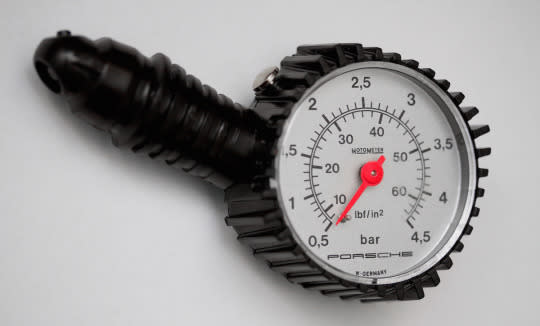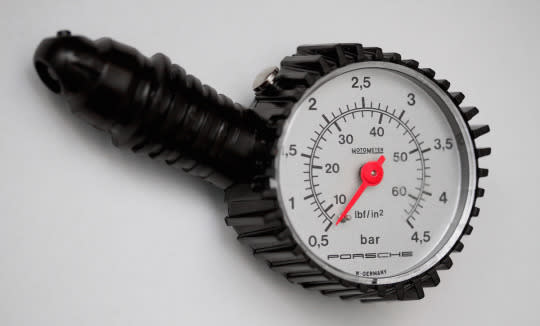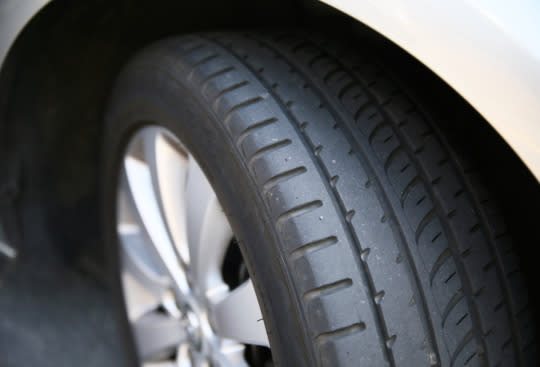Should I Over-Inflate My Car’s Tires To Improve My Fuel Efficiency? Question Of The Day

A few more pounds of air might give you better gas mileage but it’s likely to do more damage in the long run.
Photo by Highways England / Flickr
Question: How much does over-inflating car tires increase fuel efficiency?
Answer: For anyone thinking about giving this a try, the short answer is a bit deflating: Not very much. Over-inflating tires to improve gas mileage is akin to taking a larger-than-recommended dose of painkillers, thinking it will work even better than the prescribed amount. You might feel better faster, but you also put yourself at risk for more serious problems.
“You can increase fuel economy by increasing air pressure,” said Mark Cherveny, manager of global regulations, standards and compliance for Goodyear Tire & Rubber Company. “But the improvement would be marginal at best and Goodyear definitely does not recommend doing it.”
Car and tire manufacturers collaborate to develop optimal tire pressures for vehicles, and those pressure recommendations stem from extensive test data. “What you end up with is a tire/vehicle combination that maximizes a number of tire-performance characteristics, such as ride, comfort, handling and tread wear,” Cherveny said. “If you change the inflation pressure, you affect those attributes because you change the ‘footprint shape’ of the tire.

“For instance, if you increase air pressure (above recommended levels), you’ll decrease the ride comfort – you’ll feel every little bump,” he said. “Moreover, it increases the risk of impact damage if you, for example, hit a pothole.” Handling on corners also deteriorates.
Here are a few more thing to consider regarding proper tire inflation. To get an accurate reading, check the air pressure after your car has been parked for at least three hours. And if you do happen to check the pressure while you’re filling up at a gas station, assume the reading you get is two to three psi higher than what the pressure will be after the tires cool off.
You should check your tires’ pressure at least once a month because tires lose about one to two psi a month, through natural air loss. That drop is more dramatic in cold weather; tires can lose one to two psi for every 10-degree drop in temperature.

Another note of caution: The tire-pressure-monitoring systems now standard in most cars aren’t always accurate. By the time the warning indicator goes on, your tires could already be as much as 25 percent below the suggested tire pressure.
The risk is not worth any minute gain you might get.
We’re scouring the Internet to uncover interesting questions that people have posted looking for advice from the unwashed masses. We will contact experts to give you well-researched, professional advice. You can also submit questions to autos_qotd@yahoo.com.
